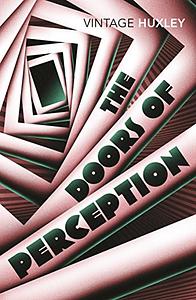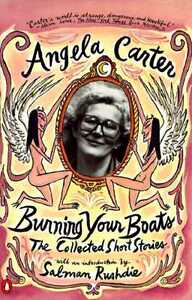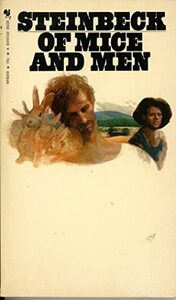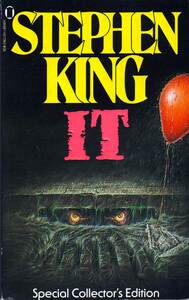Take a photo of a barcode or cover
kevin_shepherd's Reviews (563)
"I do not wish [women] to have power over men, but over themselves." ~Mary Wollstonecraft
Doubly impressive when considered within the context of 18th century sensibilities, Wollstonecraft took on the educational and political theorists who held women in comparative low regard (if not outright contempt).
From a 21st century perspective it is disheartening to see all the similarities. After 230+ years the struggle for equal worth should by now be a historical footnote and not still an ongoing process.
Doubly impressive when considered within the context of 18th century sensibilities, Wollstonecraft took on the educational and political theorists who held women in comparative low regard (if not outright contempt).
From a 21st century perspective it is disheartening to see all the similarities. After 230+ years the struggle for equal worth should by now be a historical footnote and not still an ongoing process.
“…Christianity and alcohol do not and cannot mix. Christianity and mescalin seem to be much more compatible.”
An interesting but very unscientific survey of one; Huxley’s mescaline (peyote) experiment, May 1953, had him contemplating the fabric of space/time whilst entranced by the folds of his trousers.
Okay, I’ll concede that narcotics and hallucinogens may have inspired a few great works of art and literature but I remain highly skeptical of the scientific value of any anecdotal accounting of drug-induced euphoria. There are good reasons why many outspoken proponents of “expanded perceptions” had tormented and/or shortened lives (Jim Morrison, Philip Dick, Jack Kerouac, etc.). 3 stars.
“Reality is just a crutch for people who can’t handle drugs.” ~Robin Williams
An interesting but very unscientific survey of one; Huxley’s mescaline (peyote) experiment, May 1953, had him contemplating the fabric of space/time whilst entranced by the folds of his trousers.
Okay, I’ll concede that narcotics and hallucinogens may have inspired a few great works of art and literature but I remain highly skeptical of the scientific value of any anecdotal accounting of drug-induced euphoria. There are good reasons why many outspoken proponents of “expanded perceptions” had tormented and/or shortened lives (Jim Morrison, Philip Dick, Jack Kerouac, etc.). 3 stars.
“Reality is just a crutch for people who can’t handle drugs.” ~Robin Williams
Hillbilly Sophistry
In a way, Flannery O'Connor strikes me as a Catholic version of Erskine Caldwell; by that I mean that they both infused their stories with abject poverty and fanatical religiosity. Much like ‘Tobacco Road’ (Caldwell, 1932), ‘The Violent Bear It Away’ (O’Connor, 1960) is replete with racist derelicts who are also pious zealots. Both books are chock full o’ bumpkins, hicks and hayseeds; the subtle difference being that O’Connor’s novel is set in Tennessee and Caldwell’s is set in Georgia.
By all accounts Flannery O’Connor was spiritually devout, but her portrayals of Christianity are not at all flattering; the perpetrators of violence, arson, rape and murder within these pages are christians (albeit protestants, not catholics). The creation and publication of such allegorical characters, especially in 1960, was arguably audacious and incredibly gutsy. 4 stars.
In a way, Flannery O'Connor strikes me as a Catholic version of Erskine Caldwell; by that I mean that they both infused their stories with abject poverty and fanatical religiosity. Much like ‘Tobacco Road’ (Caldwell, 1932), ‘The Violent Bear It Away’ (O’Connor, 1960) is replete with racist derelicts who are also pious zealots. Both books are chock full o’ bumpkins, hicks and hayseeds; the subtle difference being that O’Connor’s novel is set in Tennessee and Caldwell’s is set in Georgia.
By all accounts Flannery O’Connor was spiritually devout, but her portrayals of Christianity are not at all flattering; the perpetrators of violence, arson, rape and murder within these pages are christians (albeit protestants, not catholics). The creation and publication of such allegorical characters, especially in 1960, was arguably audacious and incredibly gutsy. 4 stars.
“…strive for something a touch more hard-edged, intentional, altogether less arty…”
Angela Carter mines the depths of human depravity in a manner that makes my beloved Shirley Jackson look like Mother Goose. In fact, many of her stories are familiar fairytales (e.g. Beauty and the Beast, Puss in Boots, Cinderella, Little Red Riding Hood, etc.) that have been reimagined with blood and mayhem and debauchery.
“…this art, if viewed theologically, may, perhaps, be blasphemous.”
I can’t say that every story worked for me. A few of them were so fundamentally bizarre that even I, as sick and twisted as I am, came away wondering “what dafaq?” But even the off-target misses have an odd appeal. Carter infuses all of her stuff with a kind of feminist fortitude—Knights in Shining Armor and Prince Charmings need not apply—and that worked for me in a big way. 4 stars.
Angela Carter mines the depths of human depravity in a manner that makes my beloved Shirley Jackson look like Mother Goose. In fact, many of her stories are familiar fairytales (e.g. Beauty and the Beast, Puss in Boots, Cinderella, Little Red Riding Hood, etc.) that have been reimagined with blood and mayhem and debauchery.
“…this art, if viewed theologically, may, perhaps, be blasphemous.”
I can’t say that every story worked for me. A few of them were so fundamentally bizarre that even I, as sick and twisted as I am, came away wondering “what dafaq?” But even the off-target misses have an odd appeal. Carter infuses all of her stuff with a kind of feminist fortitude—Knights in Shining Armor and Prince Charmings need not apply—and that worked for me in a big way. 4 stars.
For me, reading Bukowski is like driving by the site of a huge traffic accident where a flatbed semi loaded with overflowing port-a-potties just plowed into a church bus filled with aging, syphilitic prostitutes on their way to confession—you want to see it but you don’t want to see it, but you do.
Bukowski calls these short stories “fiction” but then his chief protagonist is named ‘Charles Bukowski’ so you start to think this is more autobiographical—and then he populates these vignettes with hot, sexy women who are all clamoring to sleep with ‘Charles Bukowski’—and that’s how you know, yeah, it’s fictional after all.
It’s so hard to describe how this collection of short stories made me feel. I’m saying 90% of this [stuff] is completely repulsive—we’re talking a snot pie filled with ball sweat and beans—but every once in a while there’s a tiny glimpse of recognizable decency and honesty… and then it jumps right back to ball sweat and beans.
Bukowski calls these short stories “fiction” but then his chief protagonist is named ‘Charles Bukowski’ so you start to think this is more autobiographical—and then he populates these vignettes with hot, sexy women who are all clamoring to sleep with ‘Charles Bukowski’—and that’s how you know, yeah, it’s fictional after all.
It’s so hard to describe how this collection of short stories made me feel. I’m saying 90% of this [stuff] is completely repulsive—we’re talking a snot pie filled with ball sweat and beans—but every once in a while there’s a tiny glimpse of recognizable decency and honesty… and then it jumps right back to ball sweat and beans.
Dr. Krantz was perhaps my favorite professor at Washington State University. We could always get him off topic by getting him started on gigantopithecus. Okay, for a physical anthropology class it wasn't that far off topic, but it was still fun to watch him pantomime the posture and gait of a giant, prehistoric, bipedal primate. He was a lovable, sincere, and highly intelligent character who took footprint forensics very seriously.
Dr Krantz could examine a set of hominid tracks and tell you the approx height, weight, and posture of the individual - and then break down the mechanics and the physical characteristics of the feet that made them - their arch (if any), their flex points, and, if the substrate was right, even their dermal ridges (toe prints).
I never got the impression that Professor Krantz was 100% sold on the survivability of gigantopithicus into the 20th century, but he saw enough evidence in some of the footprint casts to crack open the door of possibility. Either there is a hoaxer afoot (pun intended) who has a PhD in primate anatomy, or there is something mysterious walking the woods in the Pacific Northwest.
Myself, I remain highly skeptical, even after reading Professor Krantz's well written speculations. Then again, I'm skeptical about everything: ghosts, karma, voodoo, crop circles, manifest destiny, capitalism, god, acupuncture, yada, yada, yada.
*My signed copy of this book will always be something I treasure. I miss him dearly.
Dr Krantz could examine a set of hominid tracks and tell you the approx height, weight, and posture of the individual - and then break down the mechanics and the physical characteristics of the feet that made them - their arch (if any), their flex points, and, if the substrate was right, even their dermal ridges (toe prints).
I never got the impression that Professor Krantz was 100% sold on the survivability of gigantopithicus into the 20th century, but he saw enough evidence in some of the footprint casts to crack open the door of possibility. Either there is a hoaxer afoot (pun intended) who has a PhD in primate anatomy, or there is something mysterious walking the woods in the Pacific Northwest.
Myself, I remain highly skeptical, even after reading Professor Krantz's well written speculations. Then again, I'm skeptical about everything: ghosts, karma, voodoo, crop circles, manifest destiny, capitalism, god, acupuncture, yada, yada, yada.
*My signed copy of this book will always be something I treasure. I miss him dearly.
“Brilliantly lit from stem to stern, she looked like a sagging birthday cake.”
With all due respect to Leonardo DiCaprio and Kate Winslet, my infatuation with RMS Titanic begins and ends with Walter Lord. Written some forty three years after the infamous disaster, Lord’s accounting is thorough and (no pun intended) deeply engaging.
I was struck by the appalling level of class favoritism when it came time for Titanic’s compliment of 2,229 to abandon ship. The chivalrous cry of “Women and children first!” held true only if you were rich and affluent. Of the 54 children that perished, 53 were steerage passengers. Lord points out that, statistically speaking, a man with a first or second class ticket had a better chance of survival than an infant with a third class berth.
As heartbreaking as this book was, I found I couldn’t put it down. I even read all the endnotes and acknowledgments—something I very rarely do. I just didn’t want to let it go. 5 stars.
With all due respect to Leonardo DiCaprio and Kate Winslet, my infatuation with RMS Titanic begins and ends with Walter Lord. Written some forty three years after the infamous disaster, Lord’s accounting is thorough and (no pun intended) deeply engaging.
I was struck by the appalling level of class favoritism when it came time for Titanic’s compliment of 2,229 to abandon ship. The chivalrous cry of “Women and children first!” held true only if you were rich and affluent. Of the 54 children that perished, 53 were steerage passengers. Lord points out that, statistically speaking, a man with a first or second class ticket had a better chance of survival than an infant with a third class berth.
As heartbreaking as this book was, I found I couldn’t put it down. I even read all the endnotes and acknowledgments—something I very rarely do. I just didn’t want to let it go. 5 stars.
“We either learn to accept or we end up writing letters home with crayons.”
“I seen too many guys with land in their head. They never get none under their hand.”
“…he thrusts his fists against the posts, and still insists he sees the ghosts.”









